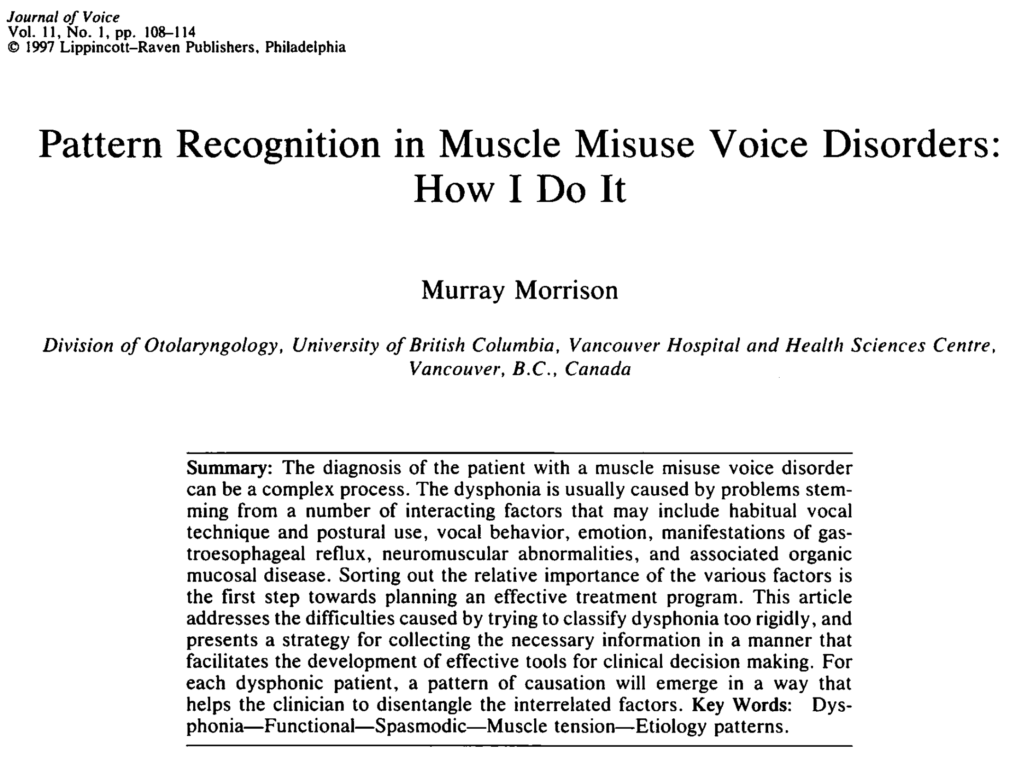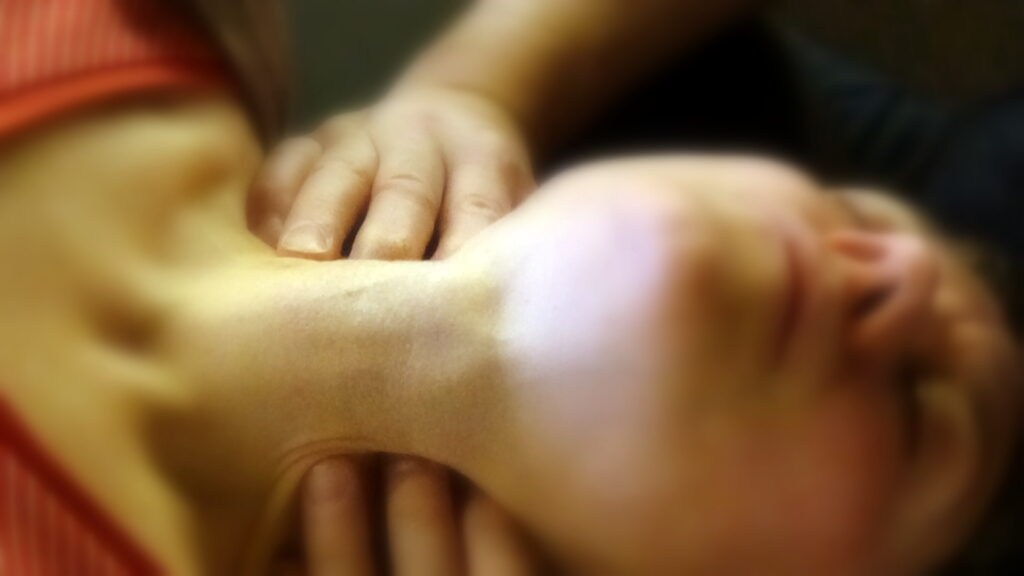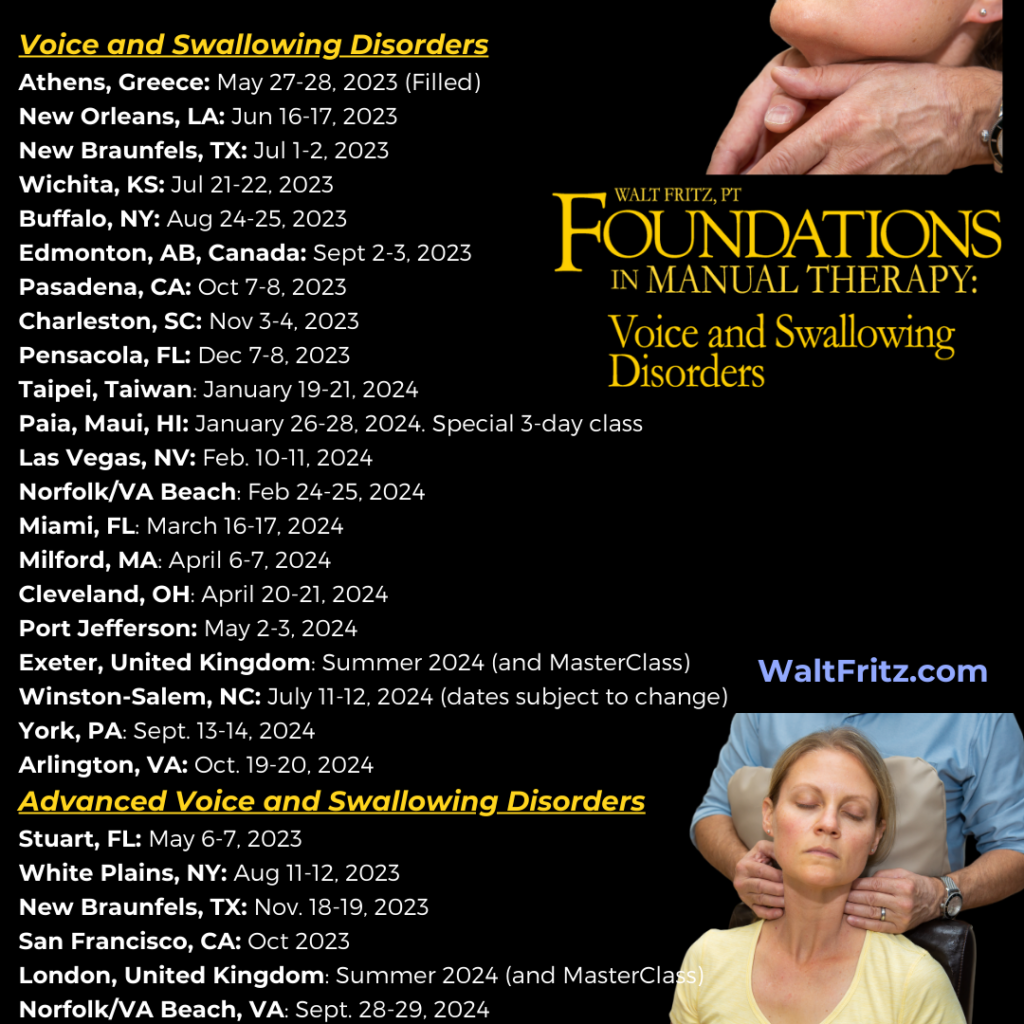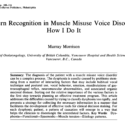Manual therapy to the retrolaryngeal “gutters”

Accessing the area in front of the spinal transverse processes, for the past 28 years, I’ve used a manual therapy technique taught to me in 1994 as an anterior cervical technique for neck and arm pain. Though fraught with outdated concepts of cause and effect, the hands-on sequences proved helpful to many patients. As I evolved my work from a fascial-based explanatory model to a multifactorial one and moved into working with issues centering on this anterior neck region with speech pathologists and related professionals, the explanations and impacts changed. I no longer rely on aggressive pressures nor think of my work as releasing fascia, aligning vertebrae, or remediating bulging discs. Instead, I see the actions of any manual therapy intervention as being multifactorial, with peripheral input triggering a local response from the tissues to reach up to higher centers for potential impacts.

In the many years of using variations on this sequence for treatment, I’ve just recently encountered any published, peer-reviewed articles that mentioned it. As the upcoming book unfolded (Manual Therapy for Voice and Swallowing: A Person-Centered Approach, to be released by Compton Publishing in March of 2023), I came across a study published in 1997 by Morrison titled Pattern Recognition in Muscle Misuse Voice Disorders: How I Do It.
Morrison’s article reviews the manual evaluation and treatment methods for the laryngeal complex and speaks specifically to the “gutters” on the posterior lateral aspects of the larynx and the space between them and the anterior cervical spine. Commenting on the opportunity to assess this region with the patient at rest and while voicing, “Inferior constrictor tightness and freedom of the lateral laryngeal gutters: If the inferior constrictors are not holding the larynx tightly against the vertebral column, the larynx can be rotated, and the fingertips insinuated behind the posterior edge of the thyroid lamina. If the area is very relaxed, then the movement of the arytenoid cartilage can be felt, and posterior cricoarytenoid muscle contraction can be palpated during an inspiratory sniff. If the larynx is tightly held, then the lateral gutters are not accessible at all. Great care must be taken to avoid carotid artery compression during this maneuver” (Morrison, 1997, pg. 112).
Morrison mentions treatment to this region from the context of laryngeal manipulation, a method frequently explored in the voice literature. This method was said to lower the local perilaryngeal muscle tension responsible for muscle tension dysphonia. While shown to be helpful, this relatively aggressive intervention is less tolerated by some individuals, and other options have emerged. I place the slower, sustained style of manual therapy in this latter category, used in various approaches (including my own). These non-manipulative styles of treatment allow for an individual’s preferences, requiring the patient to provide feedback on how the interaction is done, vs. the clinician-as-expert influences at the core of laryngeal manipulation models.
Though many are doubtless aware that I am not a fan of clinician-driven intervention without the inclusion of patient feedback into the treatment, I was interested to note how Morrison describes this region that can be accessed via slow and gentle touch. This anterior cervical/retrolaryngeal region can be accessed for evaluation and intervention and can be highly useful for dysphonia, vocal fatigue, dysphagia, globus, and other related problems. But as with any intervention, a risk exists, especially when pressures begin to encroach on the carotid artery region via force directly on the SCMs or when patient feedback is not requested and respected. Only some things we do are well-documented in the research, but when it is, it allows justification for mitigating the risks and applying the intervention.
Are positive outcomes alone a justification for an intervention? Not without a few boundaries, such as maximizing patient input and feedback and ensuring safety. Is research important? You bet it is.
If you are interested in learning more, my live or online courses can teach you more about treatment through this retrolaryngeal region.
Morrison, M. (1997). Pattern recognition in muscle misuse voice disorders: How I do it. Journal of Voice, 11(1), 108-114.




Sorry, comments are closed for this post.